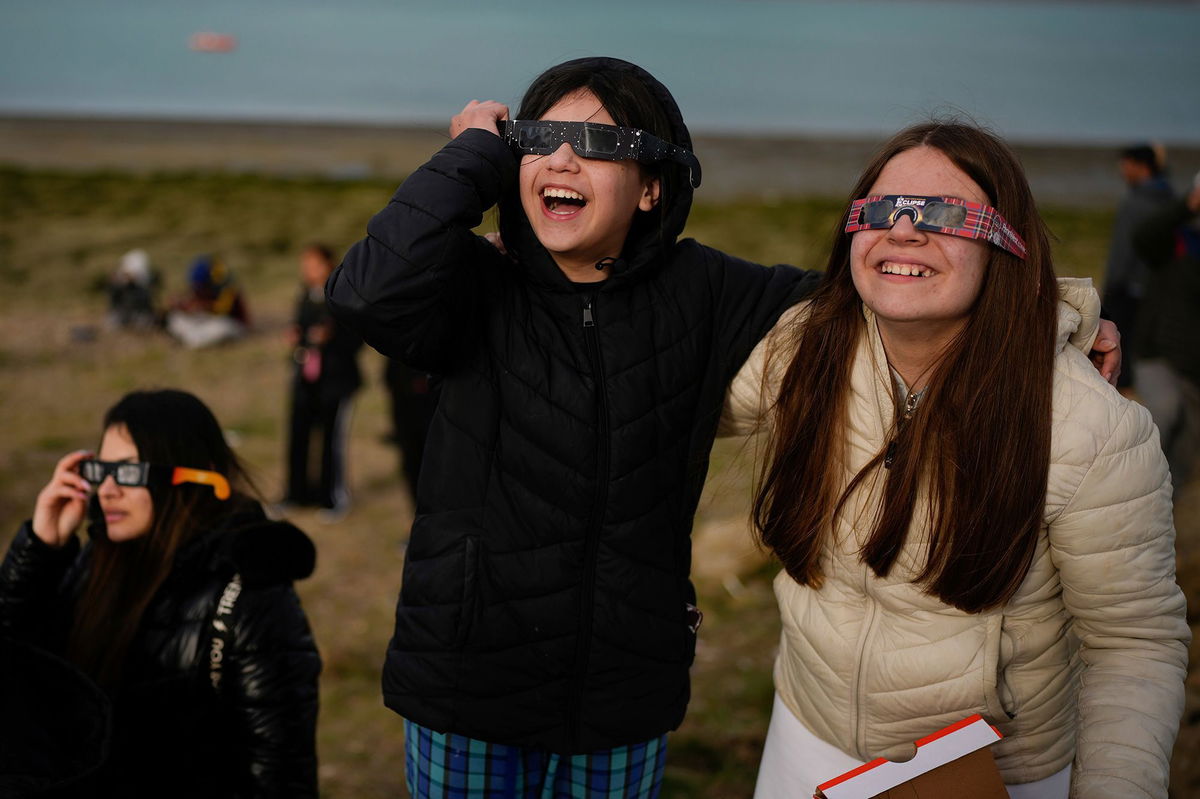Next solar eclipse: When and where to view the celestial event

People watch as an annular solar eclipse appears Wednesday in the sky over Puerto San Julián
(CNN) — If snapshots of the dazzling “ring of fire” that danced across the skies of South America on Wednesday sparked eclipse fever, sky-gazers won’t have to wait too long for additional celestial spectacles in store for next year.
While there won’t be another “ring of fire” event until 2026, opportunities to watch the moon obscure some of the sun’s surface are around the corner.
Annular solar eclipses like the event that just unfolded occur when the moon passes between Earth and the sun. The silvery orb is near or at the farthest point in its orbit from our planet, so it can’t completely block the sun as it does during a total solar eclipse. But the alignment allows the moon to blot out most of the sun, creating the stunning “ring of fire” effect.
Two partial solar eclipses will occur in 2025. A partial solar eclipse happens when the moon moves between the sun and Earth without being perfectly aligned, causing the moon to partly obscure the sun and forming a crescent shape.
The first partial solar eclipse of 2025, on March 29, will be visible from a slice of the northeastern United States and Canada as well as Greenland, Iceland, and parts of Europe and northwest Africa.
A second partial solar eclipse will arrive six months later, on September 21, but only a few lucky nations across Oceania — including New Zealand, Fiji and a small part of Australia — and Antarctica will be able to see the spectacle.
Another annular solar eclipse will arrive on February 17, 2026. The full display will only be visible from Antarctica, but a partial eclipse will still be seen outside the primary path from southern Africa and South America, according to NASA.
Finally, a total solar eclipse — such as the one that drew millions of spectators across North America last April — will once again grace the skies on August 12, 2026. A total solar eclipse is far different from a partial eclipse or a ring of fire event, as the moon completely covers the sun, casting a shadow that plunges a swath of the Earth into darkness for minutes at a time.
The path of totality will cross over Greenland, Iceland, Russia, Spain and a small part of Portugal, while a partial eclipse will be visible in parts of Europe, Africa and North America.
To witness any of these solar eclipse events, be sure to use certified eclipse glasses or a handheld solar viewer to shield your eyes from the sun’s harmful rays and observe the event safely. If you don’t have those, you can use a telescope, binoculars or camera that has a special solar filter on the front, which acts the same way eclipse glasses would.
But don’t look through any optical device — camera lens, telescope, binoculars — while wearing eclipse glasses or using a handheld solar viewer, according to NASA. Solar rays can still burn through the filter on the glasses or viewer, given how concentrated they can be through an optical device, and can cause severe eye damage.
Eclipses around the world
For globe-trotters eager to see more events, below are dates for other upcoming total solar eclipses and where their paths will traverse:
July 22, 2028: Australia and New Zealand
November 25, 2030: Namibia, Botswana, South Africa, Lesotho, Australia
March 20, 2034: Nigeria, Cameroon, Chad, Sudan, Egypt, Saudi Arabia, Iran, Afghanistan, Pakistan, India, China
September 2, 2035: China, North Korea, South Korea, Japan
July 13, 2037: Australia and New Zealand
December 26, 2038: Australia and New Zealand
April 30, 2041: Angola, the Democratic Republic of Congo, Uganda, Kenya, Somalia
April 20, 2042: Malaysia, Indonesia, Brunei, the Philippines
April 9, 2043: Russia
The-CNN-Wire
™ & © 2024 Cable News Network, Inc., a Warner Bros. Discovery Company. All rights reserved.